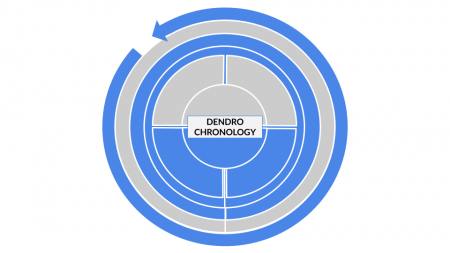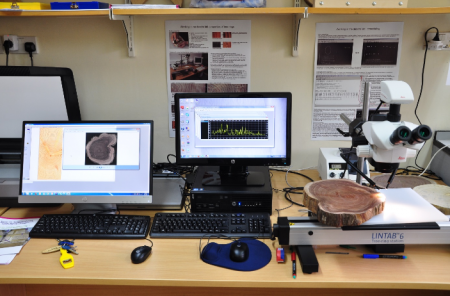Difference between revisions of "Dendrochronology"
From Sustainability Methods
Oskarlemke (talk | contribs) |
Oskarlemke (talk | contribs) |
||
| Line 13: | Line 13: | ||
|} | |} | ||
<br/>__NOTOC__ | <br/>__NOTOC__ | ||
| + | |||
| + | '''In short:''' Dendrochronology is concerned with the analysis of tree rings, whose chronological sequence can be used to date wood samples and infer information on environmental conditions, stressors and their effects on the plant species. | ||
| + | |||
| + | ==Visualisation of a typical result== | ||
| + | [[File:ResultVisualisationDENDROCHRONOLOGY.png|450px|thumb|left|Figure 1: modern dendrochronology lab with software for measuring and cross-dating rings and a scanner (Foster 2013a)]] | ||
---- | ---- | ||
Revision as of 15:03, 18 April 2023
| Method categorization | ||
|---|---|---|
| Quantitative | Qualitative | |
| Inductive | Deductive | |
| Individual | System | Global |
| Past | Present | Future |
In short: Dendrochronology is concerned with the analysis of tree rings, whose chronological sequence can be used to date wood samples and infer information on environmental conditions, stressors and their effects on the plant species.
Visualisation of a typical result
The authors of this entry are Heike Zimmermann and Fabienne Friedrichs.

